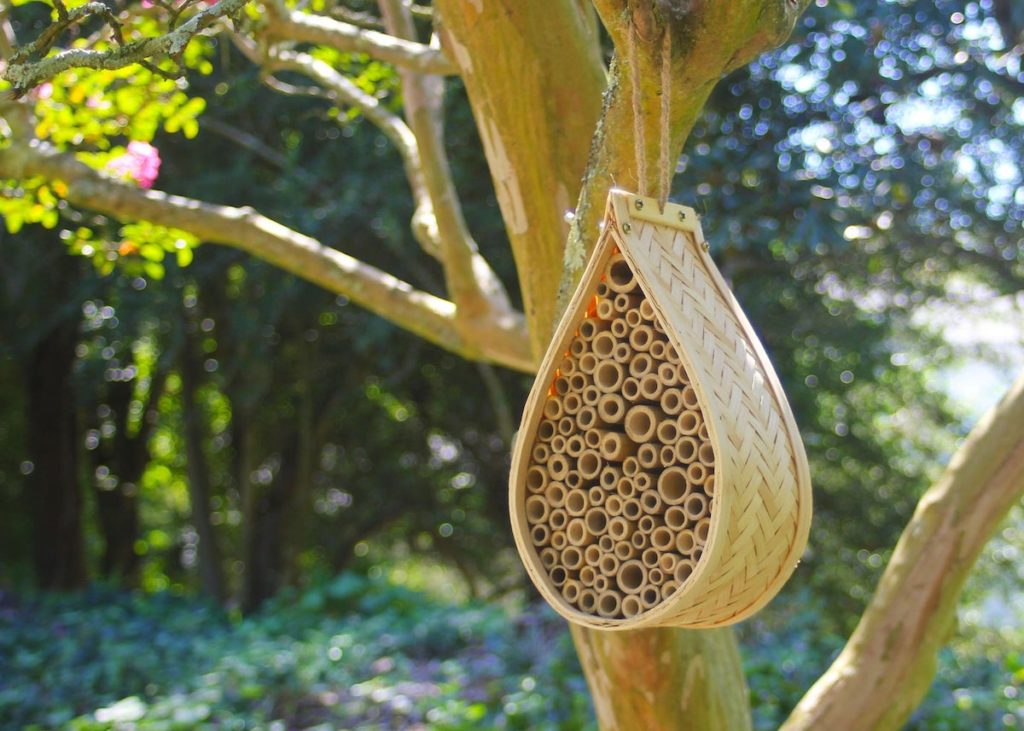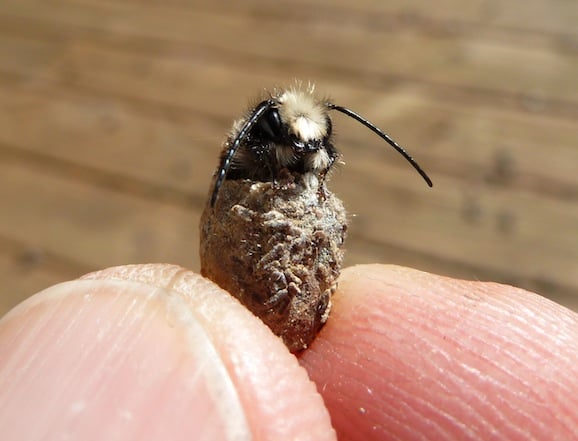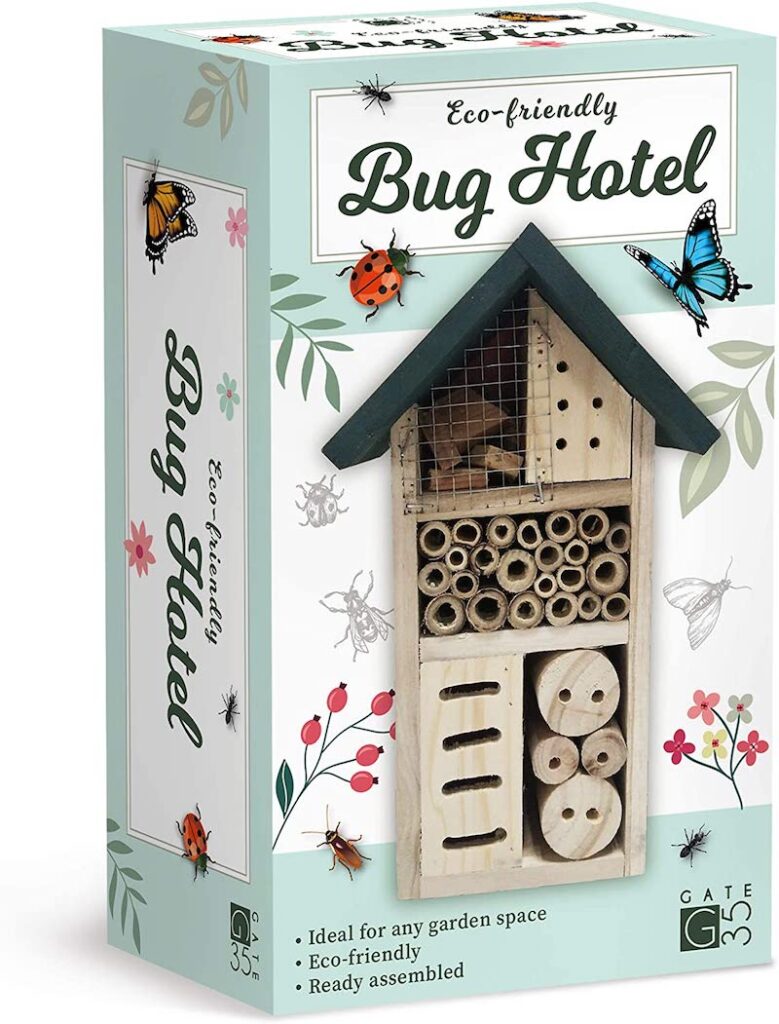The Benefits of Solitary Bees & How to Raise Them
Of all the species of bees native to the United States, mason bees are the easiest to keep. They’re solitary bees who nest in tunnels and don’t make honey. Mason bees are extraordinary pollinators, and you don’t need any protective gear to keep them.
Dave Hunter and his team at Crown Bees are working to prevent colony collapse syndrome and educate homeowners about the benefits of becoming backyard beekeepers.
As you probably know, our honey bees are struggling. Whether as a result of climate change, GMO crops, cellular tower radiation, or a combination of factors, scientists have not been able to fully solve what’s killing these wonderful insects. More money is being shifted to “Plan B”, or finding what else can pollinate our crops and orchards.
Your backyard holds the answer. You can raise gentle bees that are useful to your regional farmlands PLUS provide a wonderful education for your children.
What are solitary bees?
Most people think there are four types of bees: honey bees, bumble bees, wasps, and hornets. So, you might be surprised to learn there are more than 8,000 species of bees, hornets, and wasps in North America alone.
When it comes to bees, there are two varieties: social and solitary.
Social bees communicate and work with each other, like honey and bumble bees. They have a queen with worker bees that gather pollen/nectar, tend to the young, and defend their hives.
Solitary bees don’t communicate or work with each other in a collective hive. But they do want to live near their neighbors. Each female bee is a queen, and she does it all! She gathers pollen and nectar, lays eggs, and gathers mud for her nest.
Solitary bees are gentle and don’t want to sting
Since solitary bee queens have to do everything, it would be very hard to fly to flowers for pollen and nectar, gather mud, and also defend the hole in which she is placing everything.
She can’t actually do it all! As a result, she doesn’t defend her hole/nest. She has no need to sting, and so doesn’t!
It is very hard to get stung by a solitary bee
The only way to get stung would be to squeeze one of them in your hand or get one caught in clothing where it might be scared.
Because these rarely sting, their venom is extremely mild. This type of bee sting generally causes only a slight itch, even less than the itch associated with a mosquito bite. If by a rare chance you or your child gets stung, one of these home remedies for bee stings can easily help.
Each working bee, whether social or solitary lives about six weeks. In a honey bee hive, a queen lays a thousand eggs each day, and a thousand bees die each day. Their wings can only flap so long until they wear out. Because a honey bee queen is laying eggs every day, her hive has bees flying in and out from spring through the fall.
Since solitary bees only live six weeks, we find different bees emerging at different times of the year. All species of solitary bees come out of their cocoons at about the same time for them to pollinate their flowers that they like best.
Spring mason bees will all come out when the plum and cherry trees are in bloom. Other types of solitary bees will come out when raspberries are in bloom, and still others emerge when gardens are in bloom.
Solitary bees are special pollinators
What makes bees so special is that they have incredibly powerful flower pollinating powers. It is remarkable what they set in motion. A pollinated flower in an apple tree creates an apple. A pollinated dandelion creates beautiful little umbrella seeds.
How do they do it?
Honey and bumble bees gather the pollen from the flowers and move it to their back legs. Hardly any pollen is left over for the flower. Mason bees are very messy with how they pollinate. They belly flop on each flower, getting pollen everywhere on their furry bodies. The pollen stays on their undersides and falls off on the next flower or leaf.
One mason bee can pollinate about 2,000 flowers, while a honeybee will only pollinate about 15 flowers even though they visit the same number of flowers.
Do solitary bees make honey?
Only the honeybee makes a lot of honey. No other bees produce honey, except for the bumble bee that saves just a little bit to survive the winter. Solitary bees are wonderful important pollinators and will give you lots of fruit and vegetables, just no honey.
You can raise these gentle, educational bees
Many types of solitary bees live in holes. The spring mason bees are very popular as they are in high demand for fruit trees. Find a full library of information on how to raise bees.
All you need for success is a mason bee house, some holes of the right size, nearby pollen, and a good source of clay/mud.
Having these gentle bees in your yard is easy and fun.
If you decide to raise mason bees, place the cocoon behind the nesting material. When it’s warm enough, the bees will cut their way out of their cocoon and will begin to fly around your yard looking for holes, pollen, and mud to use.
Put their mason bee house on the warm side of your home at about head height so that you can watch what they’re doing. Put a few sticks in between some of the holes so that it looks messy.
The bees will emerge, mate, and begin nesting quickly. After about six to eight weeks, the bees will begin to expire. They’ve left eggs for next year in their holes, which will slowly grow, spin cocoons, and wait in hibernation for the following year.
Get the kids involved with a DIY project! You can attract bees, butterflies, ladybugs, and other insects to your garden. They’ll be nice and welcome in their own little pollinator hotel made from eco-friendly materials.
Mason bees are easy, educational, safe, low cost, and they will increase in numbers substantially. You may even want to give your excess cocoons to friends, family, and neighbors.
For more outdoor projects with kids, try a nature scavenger hunt or creating a wildlife garden.



